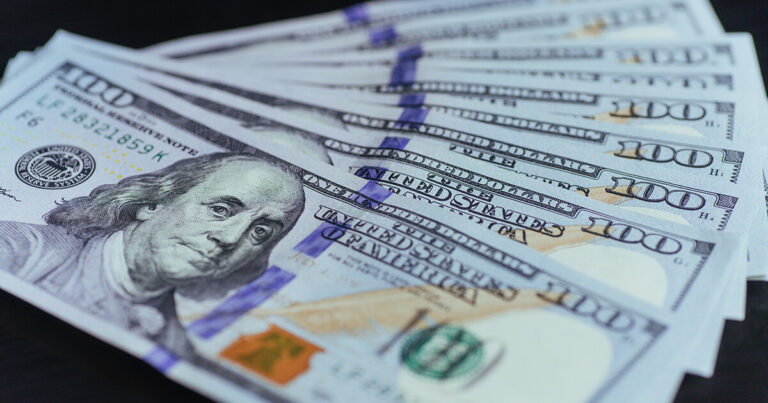The continued deteriorating USA-China relationship and weak economic data, among other fundamentals, affected the performance of the g7 market.
Also, the possible outbreak of 2nd wave COVID 19 pandemic created jitters on top of the slow reopening market economies.
In this weekly review, we shall look at how the fundamentals affected the currencies.
Important Weekly Highlights

Weekly highlights cover the following important global events;
COVID 19 global pandemic
Many economies have opened up. However, on easing against the COVID 19 lockdown measures, there is a growing fear of a possible 2nd wave outbreak of the virus.
New incidences have been reported in Wuhan, the origin of the virus, South Korea, and Germany.
Should there be an outbreak of the dreaded COVID 19 2nd wave outbreak, it will trigger panic selling and risk aversions.
Currently coronavirus statistics stand at: confirmed cases 4,744,516, deaths 313,713 and recovery1,826,624.
Oil prices slowly regaining
There was optimism in the oil sector as prices continue to rise.
As the supply and demand tried to balance the oil prices went up by 11% to approach $35 per barrel in the week.
Fight against corona
As many countries continue to ease lockdown measures, there is heightened fear of a possible second wave outbreak of the virus, especially in Europe and America.
Alarmingly, Russia and Brazil have become coronavirus hotbed recording 10000 and 14000 respectively new cases daily.
The US China tensions
Tensions continue to boil over between the two superpower nations. Their trade wars will lead to an avalanche of negative impacts on other economies in the world.
President Donald Trump has refused any renegotiations on the US-China phase 1 trade deal.
The president has adamantly blamed china on the handling of COVID 19 global pandemic outbreaks for millions of jobs lose and thousands of deaths.
Currency Exchange Analysis of the week
Currency exchange analysis of the g7 market shows the following ups and downs
The USD strong policy
The USD index (DXY) achieved 100.00 psychological barriers over the week.
The dollar also is known as the green buck enjoyed the over 100.00 mark all days of the week except on Tuesday where it registered 99.956
Over the week, the dollar averagely gained modestly.
The dollar gained sharply against the New Zealand dollar, sterling pound, and Australian dollar.
However, the dollar stayed unchanged against the Swiss franc, the euro, and the Japanese yen.
Trump and Powell strengthens USD
The USD also got a boost from US federal chairman Powell comment that “the committee’s view on negative rates has not changed…this is not something we are looking at”
He also mentioned that the effect of negative rates is “very mixed” this meant that the Federal reserve will not possibly implement negative rates soon and will put a limitation on building the forex market speculation.”
President Donald Trump sentiments “a great time to have a strong USD” further boosted the dollar. He strongly advocated for a shift to the strong US dollar policy, with a personal promise to follow up on it.
Trump and Powell’s sentiments immediately boosted the dollar in the forex market.
On the other hand, Jerome Powell chairman of federal reserve rejected negative interests thus pushing dollar higher.
On a positive note, Improved consumer sentiment index served as a catalyzed to boost the dollar.
Trump continues to display disappointments on China’s failure to contain the covid 19 and further alludes, possibly cutting trade deals with China.
Notably, the USD was not affected by unfavorable economic data released over the week. The consumer spending declined by 16.4% expectations while the continued easing of coronavirus lockdown measures opened up other US economies, thus providing additional strength to the dollar.
On a sour side, the US posted on Friday an 11.2% drop in industrial production.
Table: a summary of the performance of the G7 market
| Currency pair | 11th May | 17th May | Average | Percentage change | Remarks |
| USD | 99.567 | 99.769 | 99.828 | 0.675% | Increase |
| EUR/USD | 1.0808 | 1.0819 | 1.0816 | 0.2260% | Decrease |
| GBP/USD | 1.2336 | 1.2106 | 1.2232 | 2.4418% | Decrease |
| USD/JPY | 107.68 | 107.04 | 107.23 | -0.35% | Decrease |
| AUD/USD | 0.6489 | 0.6415 | 0.6458 | 1.7611% | Decrease |
| USD/CAD | 1.4008 | 1.4110 | 1.4069 | 1.3140% | Increase |
| USD/CHF | 0.9731 | 0.9716 | 0.9719 | 0.0824% | decrease |
| NZD/USD | 0.6081 | 0.5933 | 0.601 | 3.2926% | decrease |
EUR/USD sees Red
The euro opened the week at 1.088 and to close 1.0816 having shed off 0.2260% to the US dollar.
In addition to covid 19, the Europe crisis continues to ravage the weakened euro over the haven USD.
It lost on Monday, Wed, and Thursday but gained on Tuesday and Friday.
The pair EUR/USD nearly went bearish early in the week but recovered.
Germany reported 2 % drops in its GDP, better than the continent’s average.
GBP/USD straight loss
The British sterling pound suffered yet another week of decline. The pound experienced a straight decline Monday to Friday.
In the week, the sterling was badly hit to shed 2.4418% value over the week.
The impact of covid 19 weighed heavily against the sterling pound amid the renewed fear of 2nd wave of the coronavirus outbreak.
On Thursday, the united kingdom repeated its rejection to encompass the Brexit transition timeline past December.
Earlier in the week, the united kingdom endured the 1st quarter decline by 2%, the most significant quarterly decline since 2008.
The United Kingdom’s economy has just opened and is not yet vibrant; hence the dollar is expected to strengthen.
USD/JPY the dollar bounce back
The USD/JPY is the 2nd traded currency pair in the g7market.
Over the week, the USD fluctuated up and down, hovering around 107 against the Japanese yen.
The dollar reached a high of 108 on Monday then varies over the week to settle at 107.04 at the close of the week.
The dollar shed off a dismal 0.35% to the yen. Monday’s highest point was as a result of an increase in US treasury yields.
However, on Wednesday, the dollar declined following sentiments of a possible significant downside to a highly uncertain future risk from the COVID 19 pandemics.
Federal Reserve Chairman Jerome Powell announced these sentiments. The Japanese yen is generally a safer haven than the USD in a risk appetite market.
Going forward, if the world economies recover from the devastating impact of COVID 19, investors will favor the US dollar. However, if the forex market declines, investors will prefer the Japanese Yen.
The federal reserve policy also helped to lessen the risk of the USD outpacing other traditional havens g7 market such as the Japanese Yen and Swiss franc.
USD/CAD upwards
The Canadian dollar, also known as the loonie, is a commodity currency pair. The USD/CAD is 5th on the list of most traded currency pair.
The American dollar gained massively against the loonie in the week.
The American dollar was boosted by the rise in consumer spending index and the continued reopening of US economies
The increase in oil prices provided some support to the Canadian dollar against the green buck but not enough to gain against the American dollar.
Investors favored the green buck over the loonie mainly due to risk eversions, 2nd wave of COVID 19 worries, and the increasing tension between US-China.
AUD/USD in the Reds
Among the g7 market most traded currency pair, the Australian dollar is 4th on the list.
The AUD/USD currency pair was in the red in all days except on Thursday. It gained some strength only to drop again on Friday.
Overall the Australian dollar lost 1.7611 % of its value by the end of the week has started at 0.6489 and closed at 0.6415 on Friday.
The Australian dollar negatively affected by:
- Risk aversions in response to adverse market sentiments on a possible 2nd wave COVID 19 epidemic outbreak. Countries that have eased lockdown measures have started recording increased cases of the coronavirus.
- Escalating China-America tensions which boosted the safe-haven USD
- The weak economic report in Australia
- Economic stimulus plans in the US
The Austrian dollar is a commodity-based g7 currency and is highly favored by global commodity growth and its leverage to China.
USD/CHF Stable
The Swiss franc, also known as the Swissie, is a safe haven currency among the g7 market.
On Monday, the pair started at 0.9731 to close on Friday at 0.9716, shedding dismally 0.0824%.
The safe-haven CHF benefited from the worsening US-China trade tension on top of a bad economic data reported in the USA.
Besides, the CHF gained strength from fears of 2nd wave coronavirus outbreak and the slow economic recovery.
The gains of CHF were on Tuesday and Friday.
NZD/USD Badly Hit
The three commodity currencies performed poorly against the USD. A point in case is the New Zealand dollar, which was profoundly affected.
The NZD/USD currency pair is the 7th traded g7 market. This currency pair was rattled over the week, mainly by the US-China tension.
This commodity currency was also negatively affected by its weak economic data that indicated production level at rock bottom.
China’s weak economic data also worked negatively to the detriment of the New Zealand dollar.
The possible 2nd wave of coronavirus pandemic outbreak also added the woes to the New Zealand dollar.
The New Zealand dollar, also known as the kiwi, started the week at 0.6081 to close the week at 0.5933.
The kiwi felt the massive blows and lost 3.2926% from the blows.
Conclusion
The g7 market performances in the forex trade were primarily affected by the 2nd wave COVID 19 outbreak, escalating US China trade tensions and the collateral damages from the coronavirus shutdown measures.
These fundamentals will continue to affect forex trading for a long time.
The risk assets faced challenging conditions against the USD, which are set to continue soon.







